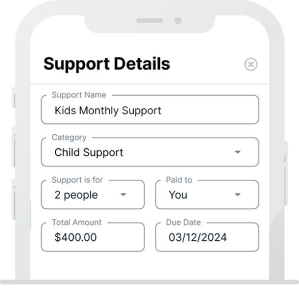The 3 4 4 3 custody schedule is a shared parenting plan that gives both parents equal time with their children. In this schedule, one parent has custody for three days, and the other parent has four days, switching every week. It promotes stability and minimizes the number of exchanges. This article will explore how this schedule works, its benefits, and possible challenges.
Key Takeaways
- The 3-4-4-3 custody schedule promotes equal parenting time, providing children stability through a consistent alternating pattern of three and four-day periods with each parent.
- While the schedule minimizes exchanges to one day per week, challenges such as distance between homes and emotional adjustments for children should be addressed through effective communication and planning.
- Customizing the schedule according to children’s ages and parental work commitments, along with utilizing shared calendars, enhances cooperation and ensures a smoother co-parenting experience.
Understanding the 3 4 4 3 Custody Schedule

The 3-4-4-3 custody schedule is designed to allow children to spend equal time with both parents, offering a balanced approach to shared physical custody. This alternating pattern ensures that each parent has the child for three days in one week and four days in the next, creating a consistent schedule that promotes stability for the child.
This schedule represents a joint custody arrangement, ensuring a 50/50 custody plan that equitably divides parenting responsibilities. It is particularly beneficial for parents who want to maintain regular and meaningful interactions with their children while minimizing the number of exchanges.
Exploring how this schedule operates, its benefits, and potential challenges can help determine if the 3-4-4-3 custody arrangement suits your family.
How the 3 4 4 3 Schedule Operates
In a 3-4-4-3 custody schedule, parents alternate between three and four-day periods. One parent has the children for three days in the first week, while the other parent takes over for four days. In the following week, the roles are reversed, ensuring each parent has equal time with their children.
This structure requires only one exchange day per week, usually on a designated weekday, simplifying transitions. The schedule often starts on a Sunday, enabling both parents to share a weekend day with their children. This consistency helps in maintaining a predictable routine for the child, fostering a sense of security and stability.
The 3-4-4-3 schedule promotes equal parenting responsibilities, encouraging both parents to be actively involved in their child’s life. This balanced approach is advantageous for working parents who need to coordinate schedules.
Benefits of the 3 4 4 3 Schedule
Several benefits make the 3-4-4-3 custody schedule attractive for many families. It ensures equal physical custody, fostering balanced parenting time and involvement in the child’s life. Children benefit from regular and meaningful interactions with both parents, which helps in building secure attachments and emotional stability.
The 3-4-4-3 schedule minimizes exchanges to one day a week, reducing stress and logistical challenges. This consistency helps children adjust better and provides a predictable routine for their well-being.
Challenges and Considerations
Despite its benefits, the 3-4-4-3 custody schedule has challenges. The distance between parents’ homes can complicate exchanges, making it less ideal for families living far apart. Additionally, good communication about school and extracurricular activities is necessary for successful mid-week exchanges.
Some children may find it difficult to adjust to weekly changes in routine, impacting their emotional stability. Additionally, one parent might have the children every weekend, which could lead to feelings of unfairness or resentment.
Frequent communication between co-parents is vital to address these challenges and maintain a positive dynamic. Discussing the effects of weekly parenting time exchanges on children ensures smooth transitions, minimizing stress and promoting a harmonious co-parenting relationship.
Customizing the 3 4 4 3 Schedule for Your Family

Adapting the 3-4-4-3 custody schedule to your family’s unique needs is crucial for its effectiveness. A 50/50 custody approach aims to preserve the child’s relationship with both parents equally, fostering balanced participation.
Consider factors like the children’s ages, parents’ work schedules, and the family’s overall situation when customizing the schedule. Allow time for everyone to adjust to the new arrangement before making changes.
The following subsections provide guidance on adapting the schedule for younger and older children and ensuring flexibility for special occasions.
Adapting for Younger Children
For younger children, a consistent schedule fosters secure attachments and provides stability. Predictable routines help them feel secure and comfortable, supporting their emotional and psychological development.
Frequent contact with both parents benefits younger children by maintaining strong attachments and reducing separation anxiety. Quality time with each parent significantly contributes to their well-being.
Adjusting for Older Children
Teenagers often desire more independence and may request changes to their custody schedule. Parents should understand that these requests reflect growing needs rather than rejection. Effective communication is essential when modifying the schedule to accommodate social activities and school commitments.
Involving teenagers in custody schedule decisions fosters a more cooperative and satisfying arrangement. Parents should stay engaged and supportive by attending their teenager’s events, maintaining a strong, positive relationship during this phase.
Flexibility for Special Occasions
Flexibility in the custody schedule allows parents to spend quality time with their children during special occasions. Adjusting the schedule for holidays, birthdays, and other significant events ensures meaningful time together. However, the 3-4-4-3 schedule may lead to perceived unfairness as the parent who has the children on a holiday may be the one to celebrate it with them.
Having a plan for holidays and special occasions is recommended, as the 3-4-4-3 schedule does not automatically account for these. This ensures that both parents can enjoy significant time with their children during special moments.
Effective Communication Between Co-Parents
Effective communication is essential for successful 50/50 shared parenting. The goal is to ensure the child feels loved, secure, and supported by both parents. This requires logistical coordination and open discussions about the child’s emotional state and needs.
Shared co-parenting calendars enhance communication and help maintain the 3-4-4-3 schedule. Co-parenting apps can streamline managing responsibilities and scheduling, minimizing conflicts and ensuring both parents stay aligned.
Equal custody arrangements require parents to live close, maintain good communication, and prioritize their child’s best interests. The following subsections offer strategies for using shared calendars, handling conflicts, and considering legal aspects of the custody schedule.
Using Shared Calendars
Shared calendars keep co-parents informed about each other’s schedules, which is crucial for effective co-parenting. These calendars help track important dates and events, reducing scheduling conflicts and ensuring both parents are aware of their commitments.
Calendar or custody apps can also manage pickups and drop-offs, further simplifying the process and minimizing misunderstandings.
Handling Conflicts
Open dialogue helps parents address conflicts in a way that benefits the child. Flexibility in work hours can enhance the 3-4-4-3 schedule’s effectiveness, allowing parents to manage custody exchanges better and reduce stress.
Parents with consistent work schedules can align their commitments with the 3-4-4-3 plan, reducing the need for additional childcare and helping maintain a stable routine for the children.
Older children often require schedules that align with their busy school and social lives, making flexibility and communication even more critical.
Legal Considerations
To avoid future conflicts, formalize the custody schedule in an official parenting schedule. If both parents agree on the 3-4-4-3 schedule, submitting it to the court makes it an enforceable order. This ensures adherence to the agreed terms and provides a clear framework for resolving disputes.
When planning holidays or special occasions, parents should consider how the custody schedule may impact travel arrangements and time with each parent. Legal documents should clearly outline the custody schedule to ensure clarity and prevent future disputes.
Practical Tips for Managing the 3 4 4 3 Schedule

Managing the 3-4-4-3 custody schedule effectively requires ongoing communication and organization. This helps parents share updates about the child’s activities and emotional state, ensuring both are informed and involved.
Apps like 2houses can assist families in managing their custody arrangement effectively. Custody X Change helps build a schedule piece by piece and meets court standards, ensuring a smooth arrangement.
The following subsections provide practical tips for organizing drop-offs and pick-ups, balancing work schedules, and supporting the child’s adjustment.
Organizing Drop Off and Pick Up
Clear drop-off and pick-up locations reduce confusion and ensure smoother transitions. Shared electronic calendars and communication tools help manage a 3-4-4-3 visitation schedule, keeping both parents on track and avoiding misunderstandings. Designating specific times and places for exchanges streamlines the process and helps children feel more secure during transitions.
Consistency in these arrangements provides stability and predictability for children, which is crucial in shared physical custody. Both parents should remain flexible, as unforeseen circumstances may require adjustments.
Balancing Work Schedules
Parents can coordinate work schedules by communicating openly about their commitments and finding overlaps in availability. Shared calendars help track work hours and custody exchanges, allowing parents to plan ahead and minimize conflicts.
To ensure uninterrupted time with the child, parents can set specific ‘family time’ days to minimize work distractions. A clear routine around work and custody schedules helps children know what to expect, fostering security and stability.
Planning ahead for days when both parents are working helps arrange sitters or support during custody time.
Supporting the Child’s Adjustment
Spending quality time with both parents after a divorce reduces stress, improves development, and enhances children’s sense of security. Switching homes during the school week can be challenging as children adjust to different environments and routines. Consistency in the custody schedule improves children’s mental health and reduces feelings of depression, impulsivity, and aggression.
Encouraging open communication with children about the schedule helps ease their transition and adjustment. Parents should be attentive to their children’s emotional needs, providing reassurance and support during this period of change.
As children get older, extracurricular activities may make midweek visits challenging. Staying flexible and responsive to their evolving needs is important.
Alternatives to the 3 4 4 3 Custody Schedule

Various alternatives to the 3-4-4-3 custody schedule allow families to choose what best fits their needs. Custody arrangements can include formats like 3-3-4-4 and 4-3-3-4, offering flexibility in parenting time distribution.
Common alternatives include the alternating weeks schedule, the 2-2-5-5 schedule, and the 2-2-3 schedule.
Alternating Weeks Schedule
In the alternating weeks arrangement, children spend an entire week with one parent followed by a week with the other. This schedule can be particularly beneficial for older children who can be away from one parent for a week and still maintain stability and predictability in their routines. By living with one parent for a whole week, children can plan for a week at a time without mid-week switches, which simplifies their routines.
The alternating weeks schedule also accommodates older children’s busy lifestyles and their need for independence. Involving older children, such as those in upper elementary school and beyond, in developing the custody schedule can help ensure the arrangement reflects their needs and preferences.
2-2-5-5 Schedule
Before:
The 2-2-5-5 schedule allows for two days with each parent followed by longer stretches of five days. Children spend two days with Parent A, two days with Parent B, then five days with Parent A, and five days with Parent B. This structure enables both parents to have extended periods of quality time with the children, fostering closer relationships.
After:
The 2-2-5-5 schedule consists of:
- Two days with Parent A
- Two days with Parent B
- Five days with Parent A
- Five days with Parent B
This structure enables both parents to have extended periods of quality time with the children, fostering closer relationships.
A benefit of the 2-2-5-5 schedule is that it allows longer stretches of time together before an exchange, which can be advantageous for accommodating work schedules and enhancing parenting time. Sundays and Mondays are typically spent with one parent; Tuesdays and Wednesdays with the other; with fluctuating Thursdays, Fridays, and Saturdays.
2-2-3 Schedule
The 2-2-3 custody schedule allows a child to spend two days with one parent. Then, the child spends two days with the other parent, followed by three days with the first parent, rotating weekly. This schedule provides each parent with a long 3-day weekend, which can be advantageous for accommodating work schedules and enhancing parenting time.
One potential issue with the 2-2-3 schedule is that the frequent moves can be disruptive for children, impacting their sense of stability. However, the 2-2-3 schedule promotes frequent interactions between children and both parents, which is beneficial for maintaining close relationships.
Summary
In conclusion, the 3-4-4-3 custody schedule offers a balanced approach to shared physical custody, ensuring that both parents have equal time with their children. While this schedule has many benefits, such as promoting consistent routines and reducing the number of exchanges, it also comes with challenges that require good communication and flexibility.
By understanding the mechanics of the 3-4-4-3 schedule, customizing it to fit your family’s needs, and exploring effective communication strategies, you can create a parenting plan that supports your child’s well-being and fosters a positive co-parenting relationship. Remember, the key is to remain adaptable and responsive to your child’s evolving needs, ensuring they feel loved, secure, and supported by both parents.
Frequently Asked Questions
What is the 3-4-4-3 custody schedule?
The 3-4-4-3 custody schedule allows children to spend three days with one parent and four days with the other, alternating each week for balanced time with both parents. This arrangement fosters a consistent presence from each parent in the child’s life.
What are the benefits of the 3-4-4-3 custody schedule?
The 3-4-4-3 custody schedule offers balanced parenting time, fosters emotional stability, and ensures consistent routines, which are essential for building secure attachments between children and both parents.
What are some challenges of the 3-4-4-3 custody schedule?
The 3-4-4-3 custody schedule can lead to logistical challenges, particularly if parents are distant, and requires strong communication regarding school and extracurricular activities. Additionally, the frequent changes in routine can create stress for children adjusting to the schedule.
How can we customize the 3-4-4-3 schedule for our family?
To effectively customize the 3-4-4-3 schedule for your family, consider the ages of your children, your work schedules, and any special occasions. Ensure flexibility and allow time for adjustments to create a routine that works best for everyone.
What are some alternatives to the 3-4-4-3 schedule?
Consider the alternating weeks schedule, the 2-2-5-5 schedule, or the 2-2-3 schedule as effective alternatives to the 3-4-4-3 schedule, as they provide diverse structures suited to different family needs. Each option can help create a balanced parenting plan tailored to your situation.








